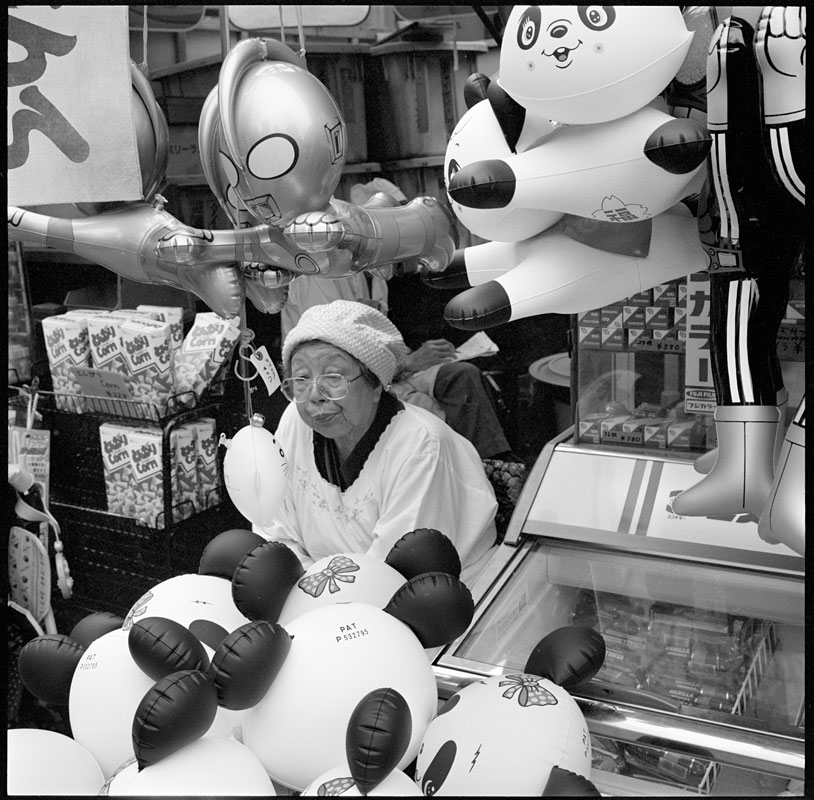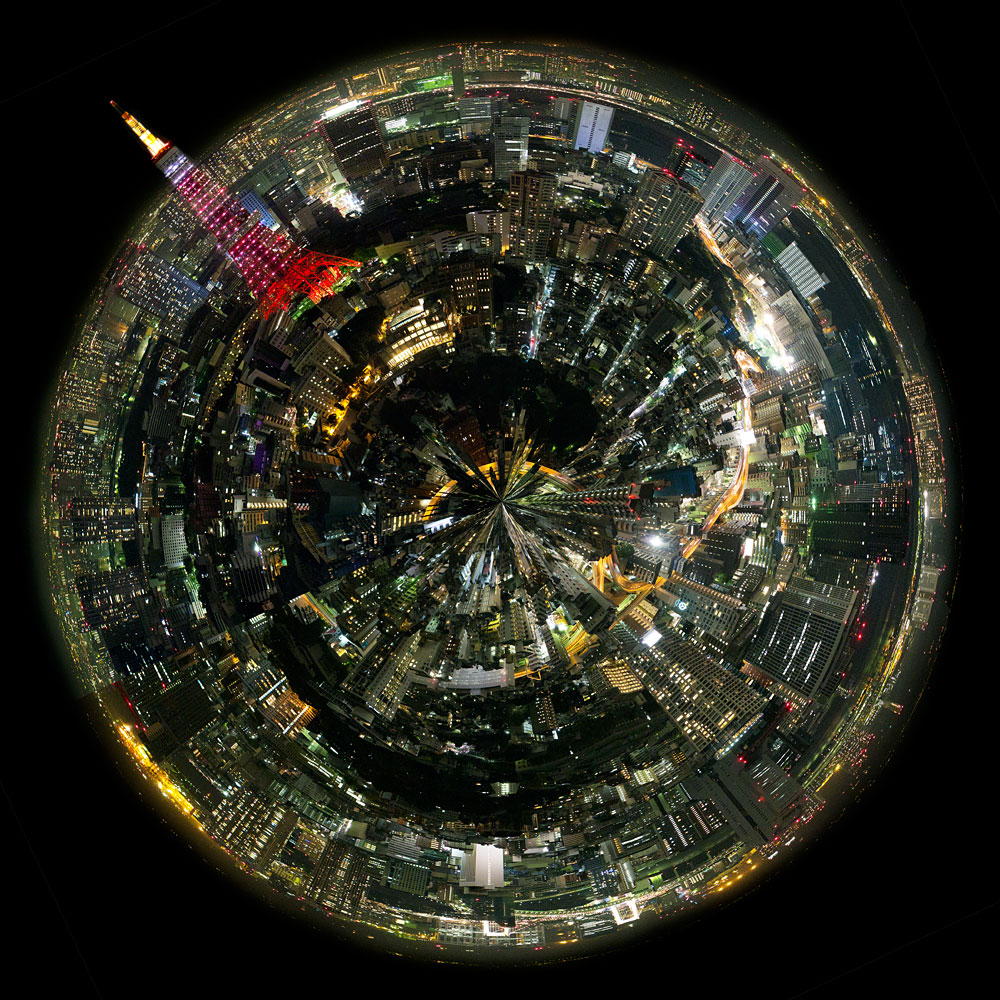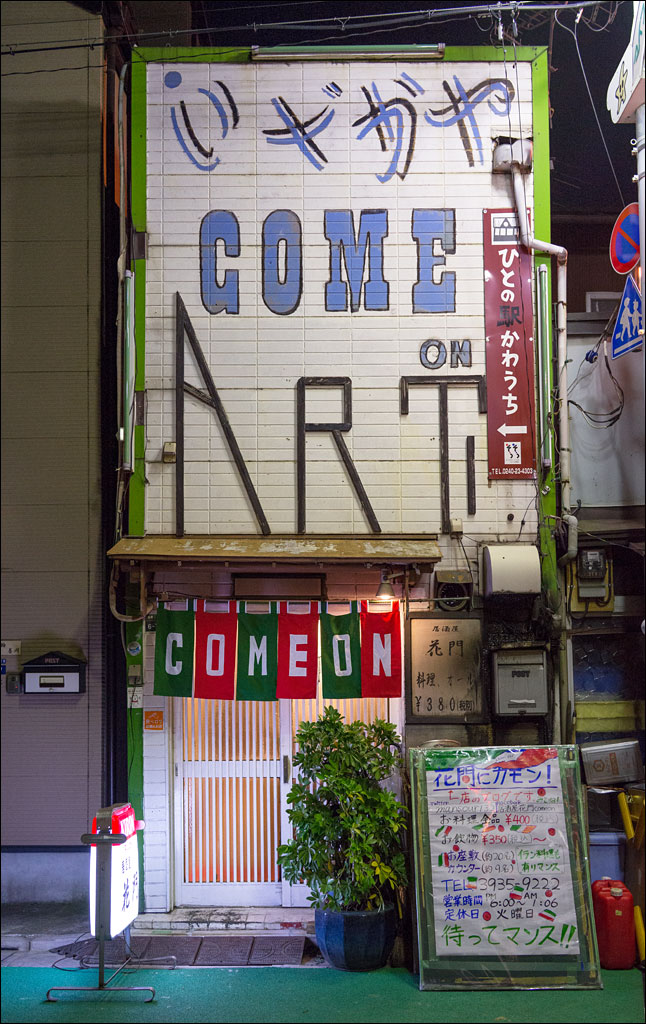 The Tokyo bar and restaurant scene can be an odd one for the visitor. While large establishments can be found around the city, there are also small places scattered through neighborhoods, especially around train stations—this one is near Kami-Itabashi station. These bars tend to be well loved by a small clientele. They can also be surprisingly good, odd signs and confusing names not withstanding. Click on the image for a larger view.
The Tokyo bar and restaurant scene can be an odd one for the visitor. While large establishments can be found around the city, there are also small places scattered through neighborhoods, especially around train stations—this one is near Kami-Itabashi station. These bars tend to be well loved by a small clientele. They can also be surprisingly good, odd signs and confusing names not withstanding. Click on the image for a larger view.
Category Archives: Tokyo
The Tokyo Rail System
 The Tokyo rail system is an amazing network. The greater Tokyo rails system, comprising of forty-eight operators, moves nearly forty million people—daily. The subway, which serves only a part of central Tokyo, moves over eight million people. To put that into context, the New York subway system moves over five million people on weekdays and Germany’s entire rail system carries ten million people each day. And the magic of this, with its 2,200 stations and nearly 3,000 miles of track (about 4,700km), the whole thing runs on time. Click on the image for a larger view.
The Tokyo rail system is an amazing network. The greater Tokyo rails system, comprising of forty-eight operators, moves nearly forty million people—daily. The subway, which serves only a part of central Tokyo, moves over eight million people. To put that into context, the New York subway system moves over five million people on weekdays and Germany’s entire rail system carries ten million people each day. And the magic of this, with its 2,200 stations and nearly 3,000 miles of track (about 4,700km), the whole thing runs on time. Click on the image for a larger view.
Tokyo Bay
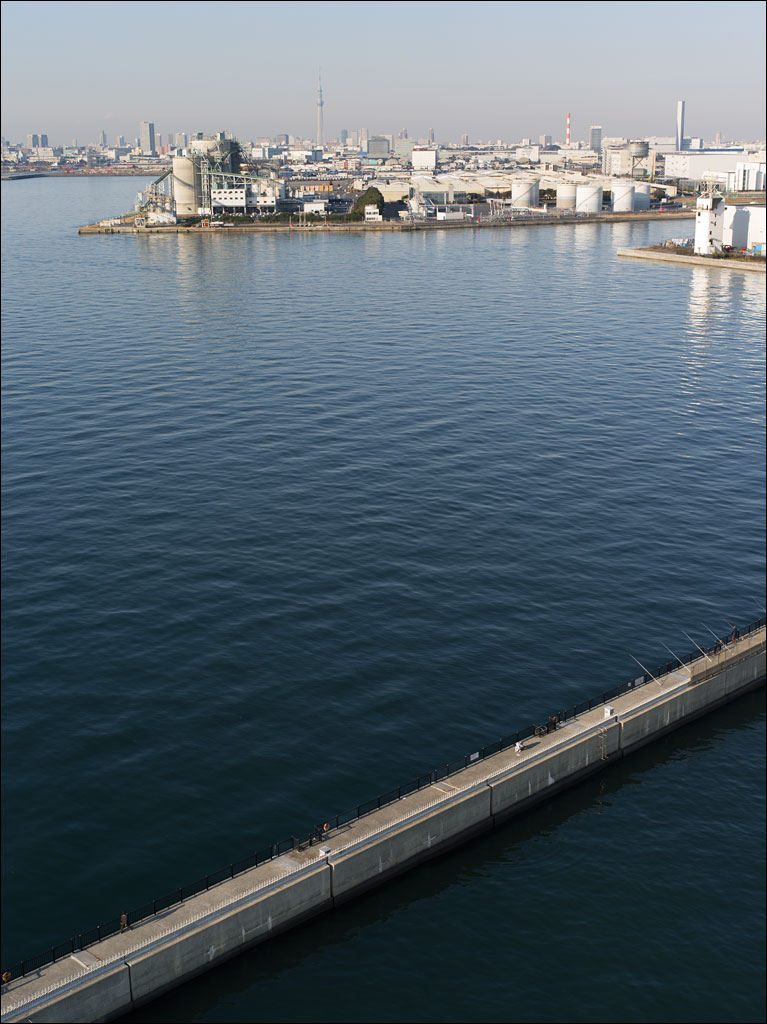 The bay area of Tokyo is a fascinating mix of industry and entertainment. Between the factories are parks and residences. Much of the land in this image is artificial; some of it old landfills for the city’s waste. What surprises me is the number of sport fishermen that use the bay. Click on the image for a larger view.
The bay area of Tokyo is a fascinating mix of industry and entertainment. Between the factories are parks and residences. Much of the land in this image is artificial; some of it old landfills for the city’s waste. What surprises me is the number of sport fishermen that use the bay. Click on the image for a larger view.
Imperial Palace, Tokyo
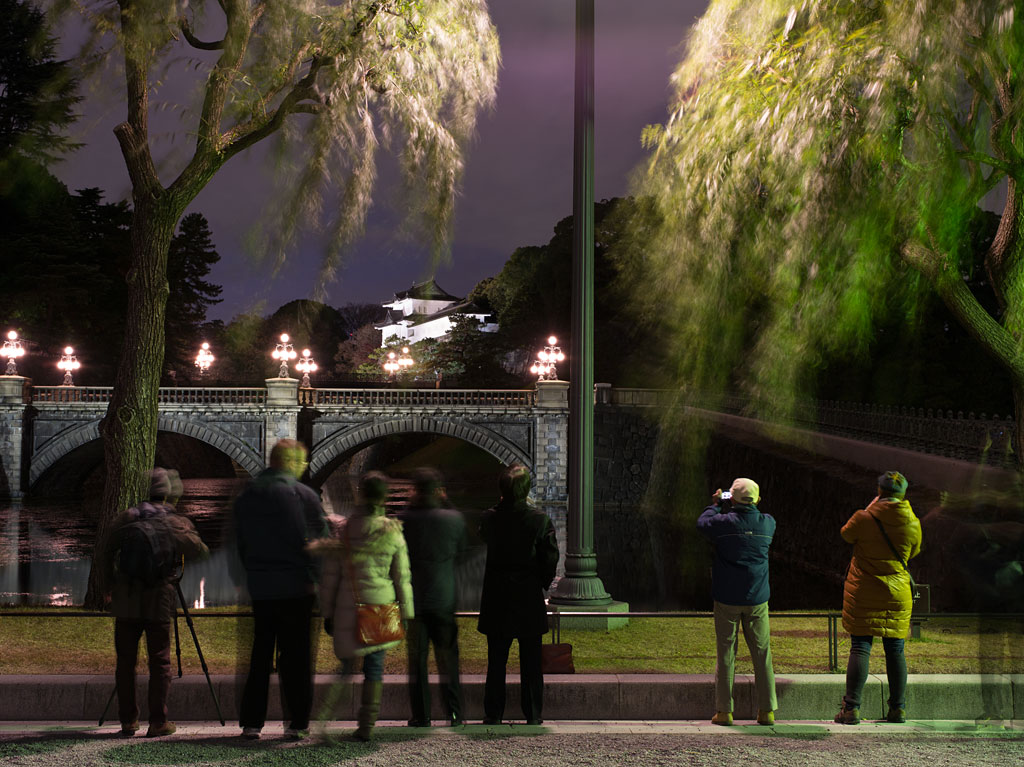 The Imperial Palace is almost a fortress to protect a forest from the dominating concrete city surrounding it. While it is home to the Japanese imperial family and the imperial household agency that supports it, much of the area is covered in trees. Seimon Ishibashi (Seimon stone bridge) and Fushimi keep mark one of the most iconic views of the palace—an entranced reserved for the imperial family and special guests. Between the emperor’s birthday on December 23rd and January 4th, the bridge is illuminated, becoming a magnet for photographers. LEDs were installed for the first time in 2014. Click on the image for a larger view.
The Imperial Palace is almost a fortress to protect a forest from the dominating concrete city surrounding it. While it is home to the Japanese imperial family and the imperial household agency that supports it, much of the area is covered in trees. Seimon Ishibashi (Seimon stone bridge) and Fushimi keep mark one of the most iconic views of the palace—an entranced reserved for the imperial family and special guests. Between the emperor’s birthday on December 23rd and January 4th, the bridge is illuminated, becoming a magnet for photographers. LEDs were installed for the first time in 2014. Click on the image for a larger view.
Moonlight over Tokyo Bay
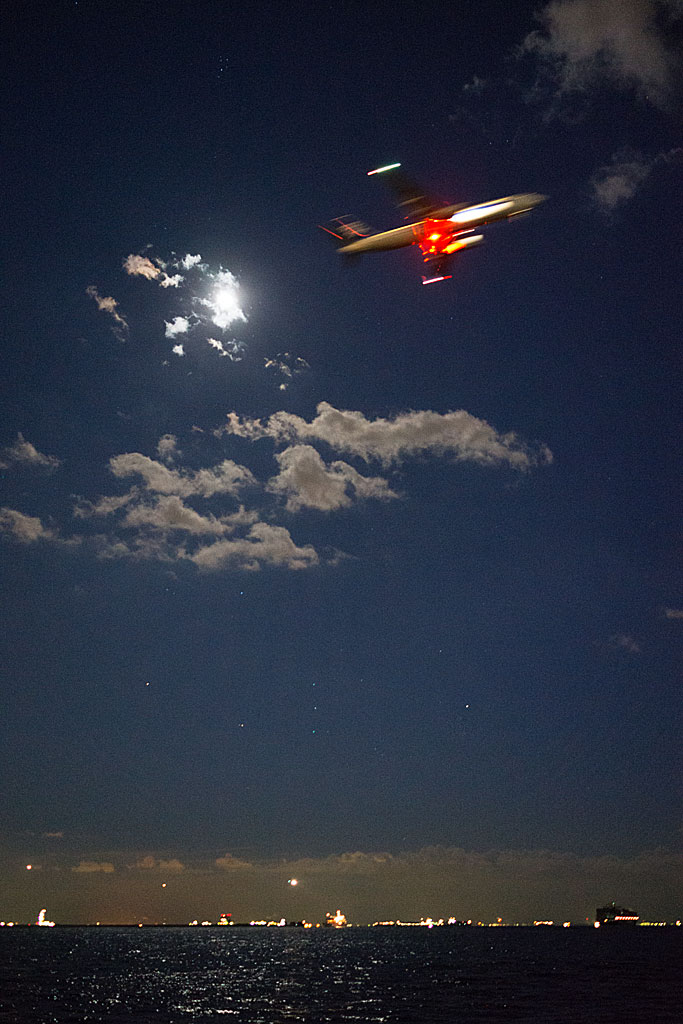 Jonanjima Seaside Park is on an artificial island in Tokyo bay. When runway B at Haneda airport is open, photographers group there to photograph the incoming planes. The lights you see on the water are ships. Just above those are aircraft lining up for their approach. The constellation Orion can be seen above the clouds on the horizon with the pleiades toward the top of the picture. Click on the image for a larger view.
Jonanjima Seaside Park is on an artificial island in Tokyo bay. When runway B at Haneda airport is open, photographers group there to photograph the incoming planes. The lights you see on the water are ships. Just above those are aircraft lining up for their approach. The constellation Orion can be seen above the clouds on the horizon with the pleiades toward the top of the picture. Click on the image for a larger view.
Night Flight from Tokyo
 Naomi and I have just returned from a wonderful trip to Tokyo. This is the first time for us to fly out of Haneda airport in Tokyo bay—we have always used Narita, which is far outside the city.
Naomi and I have just returned from a wonderful trip to Tokyo. This is the first time for us to fly out of Haneda airport in Tokyo bay—we have always used Narita, which is far outside the city.
In most respects, Tokyo is probably as far as you can get from a natural landscape—a large part of the land in this image was “reclaimed” from the bay itself. The rivers that at one point meandered across the alluvial plane the city was built on are fixed in their path. The twenty-three wards of the metropolitan area have an average population density of 13,913 people per km². When combined with the neighboring prefectures of Chiba (foreground), Kanagawa (just in the top left corner), and Saitama, the conurbation totals thirty-three million people, about the same population as Canada, the second largest country by land area. Click on the image for a larger view.
New Years Eve in Tokyo
 New Years is a big deal in Japan. It is simply not a party during the evening of December 31st. It begins then, but will be celebrated for the next several weeks. January is a month of firsts—the first visit to a shrine or temple (hatsumode), the first drawing of water, the first calligraphy, the first day of business, and so on.
New Years is a big deal in Japan. It is simply not a party during the evening of December 31st. It begins then, but will be celebrated for the next several weeks. January is a month of firsts—the first visit to a shrine or temple (hatsumode), the first drawing of water, the first calligraphy, the first day of business, and so on.
This is the main gate to Meiji Shrine, the largest shrine in Tokyo. In the first three days of 2010, 3.2 million people visited this shrine. When you think that most people leave a ¥100 coin (about a dollar) as an offering, New Years is an important time for these places. Click on the image for a larger view.
Ueno—On the Streets of Tokyo
Planet Tokyo
On the Streets of Tokyo—Ameyoko
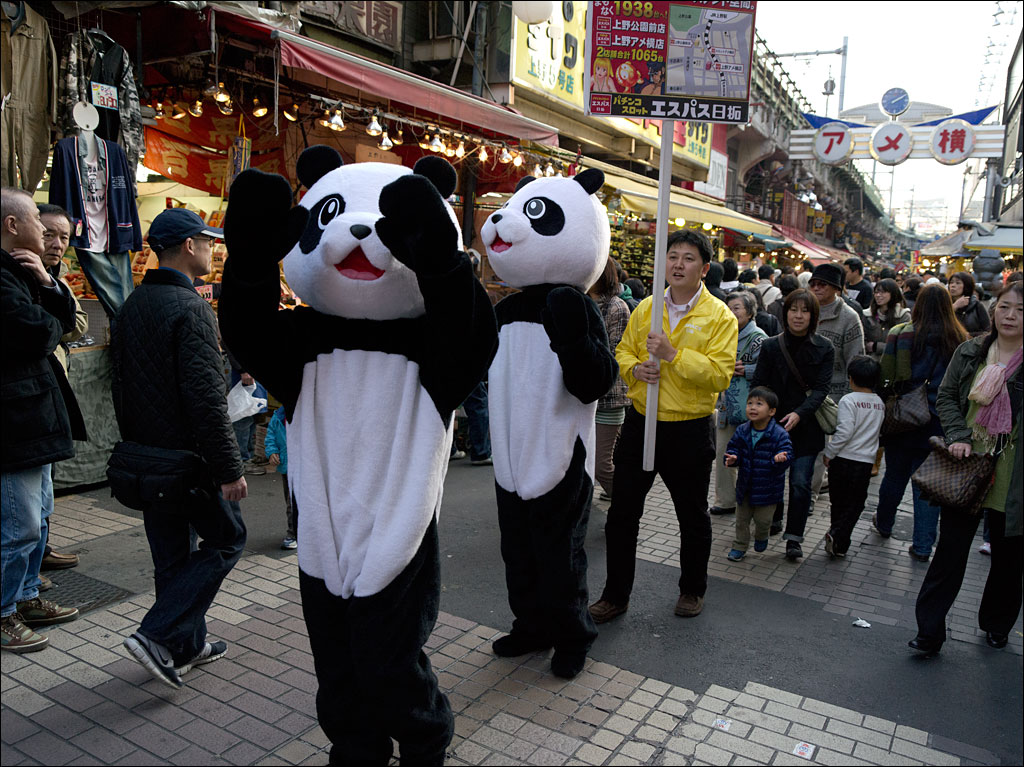 Ameyoko is an energetic market town. Vendors have built a warren of shops and stalls under the elevated railway cutting through the city. Unfortunately, this magical part of Tokyo is under threat of development.
Ameyoko is an energetic market town. Vendors have built a warren of shops and stalls under the elevated railway cutting through the city. Unfortunately, this magical part of Tokyo is under threat of development.
The pandas you see are part of an advertising campaign. You might be forgiven to think they are promoting a new toy store or the nearby Ueno zoo, especially with the excited young boy following them. What they are announcing is a pachinko parlor. Pachinko is a type of vertical pinball machine used in gambling. Click on the image for a larger view.

